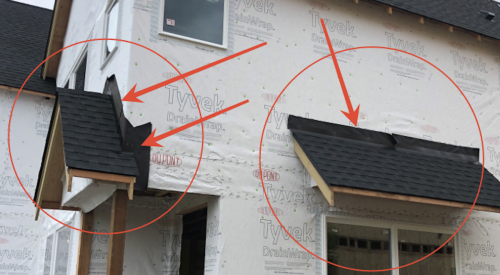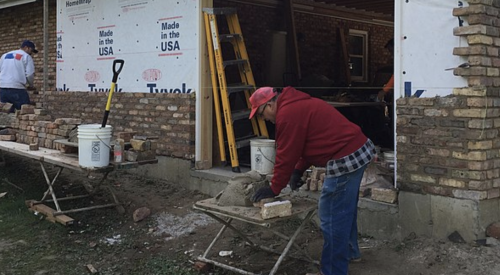Improper installation of windows and doors is the No. 1 problem in the construction industry right now, says Cordell Burton, Installation Engineering Manager for Pella Corp — and being out of square tops the list. He says lack of training or experience among contractors, windows that are installed out of square or with insufficient or improper flashings, and barriers are to blame.
"Training is the biggest gap today," says Burton, "There are a lot of new contractors untrained and out in the field."
In an attempt to bridge that gap, Pella offers a training program on the proper way to install a window. The company holds seminars around the country at Lowe's Home Improvement stores and other businesses.
Windows that are inoperable after installation are usually out of square — an easy problem to fix during installation but very difficult after an exterior finish is applied, says Dave Modtland, a senior engineer for Pella. He suggests builders test each window after installation to ensure that they open and close properly.
"The easiest way to tell if a window is not square is to look at the reveal line around the sash," says Modtland. Both Burton and Anthony Grisolia, builder services manager of Pittsburg-based Ibacos, agree t
 |
"House wrap material should be installed before the windows," says Grisolia, "and should be cut at the windows and folded into the openings to keep water from entering." The bottom of the window should be shimmed; Burton warns that even if shims aren't necessary to help level the window, they should be installed to create a channel for any water that leaks in to get back out.
Next, the sill pan flashing should be put in at the base of each window opening. Marvin Windows and Doors' new sill pan system, SillGuard, is a three-piece sill pan made from a recycled, non-corrosive and thermally non-conductive material that features sloping drainage channels and support ribs that drain moisture away from the interior wall, says Marvin spokesman John Kirchner.
 |
Head flashing will then need to be installed under the drainage plane. The plane — cut away from the window prior to installation — should then be lapped back over the flashing. "This helps to shed water," says Grisolia.
Modtland stresses the importance of using a good sealant to prevent water from seeping in through cuts and joints after the window has been installed. "Contractors should use a high quality sealant with high elasticity," said Modtland. "If one step of window installation is done incorrectly," warns Grisolia, "it could cause moisture to get in and ultimately cause mold to grow or wood to rot."
And with material and transportation costs still on the rise in the U.S., the last thing a builder needs is a higher liability insurance expense.
"Liability insurance is harder to get right now," says Burton, "and it typically doesn't cover water and moisture damage. The best insurance is doing the job properly."
| Author Information |
| Jennifer Heyns is a Virginia-based writer. |











